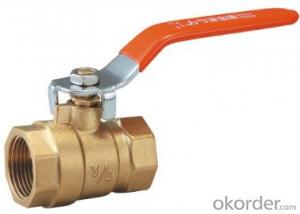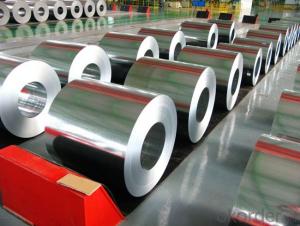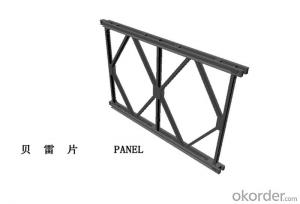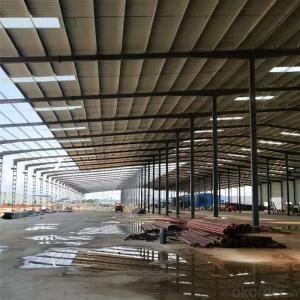Stainless Steel Plant
Stainless Steel Plant Related Searches
Best Paint For Stainless Steel Blanket Insulation For Steel Buildings Primer For Galvanized Steel Foam Filter For Stainless Steel H S Code For Stainless Steel Surface Grinding Wheels For Stainless Steel Surface Grinding Wheels For Hardened Steel Hole Saw For Stainless Steel Paint For Stainless Steel Stainless Steel For BbqHot Searches
Steel Mesh Panels For Sale Price For Stainless Steel Scrap Scrap Price For Stainless Steel Price For Stainless Steel Stainless Steel Tank For Sale Stainless Steel Sheets For Sale Cheap High Tea Sets For Sale Stainless Steel Tanks For Sale Stainless Steel For Sale High Density Fiberboard For Sale Solar Hot Water Collectors For Sale Scaffolding For Sale In Uae Scaffolding For Sale In Ireland Scaffolding For Sale In Houston Type Of Inverter For Solar Price Of Shipping Containers For Sale Types Of Inverter For Solar Stock Price For Aluminum Used Solar Inverter For Sale Steel Mesh Panels For SaleStainless Steel Plant Supplier & Manufacturer from China
Okorder.com is a professional Stainless Steel Plant supplier & manufacturer, offers integrated one-stop services including real-time quoting and online cargo tracking. We are funded by CNBM Group, a Fortune 500 enterprise and the largest Stainless Steel Plant firm in China.Hot Products
FAQ
- Steel structures are designed for energy-efficient buildings through various strategies. One of the key aspects is the use of advanced insulation systems to minimize heat transfer and improve energy efficiency. Additionally, steel-framed buildings often incorporate high-performance glazing and efficient HVAC systems to reduce energy consumption. The design also emphasizes natural ventilation and daylighting to maximize natural resources and minimize the need for artificial lighting and cooling. Furthermore, steel structures can be designed to accommodate renewable energy systems such as solar panels, further enhancing the building's energy efficiency. Overall, the holistic approach to design and construction of steel structures ensures energy-efficient buildings.
- Various techniques and principles are utilized in the design of steel structures to control wind-induced vibrations. The main objective is to guarantee the safety and stability of the structure when exposed to strong winds. One crucial method involves employing proper structural analysis and design techniques. Engineers take into account the wind loads acting on the structure and calculate the resulting forces and moments. These calculations are then utilized to determine the required strength and stiffness of the steel components. In order to control wind-induced vibrations, engineers often incorporate damping systems into the design. Damping is the process of dissipating energy within the structure, thereby reducing the amplitude of vibrations. Common damping methods include the use of tuned mass dampers (TMDs), viscous dampers, and friction dampers. These devices absorb and dissipate the energy generated by wind-induced vibrations, effectively minimizing their impact on the structure. Another important aspect is the design of the structural members themselves. Steel structures can be designed with increased stiffness in order to minimize deflections and decrease the likelihood of resonance with wind-induced frequencies. By selecting appropriate section sizes and configurations, the structure can be made more resilient against wind-induced vibrations. Furthermore, the aerodynamic shape of the structure also plays a role in reducing wind-induced vibrations. Utilizing streamlined shapes and reducing the exposed surface area can help structures minimize the impact of wind forces and resulting vibrations. This approach is particularly important for tall and slender structures, where wind-induced vibrations can be more significant. Additionally, regular inspections and maintenance are essential to ensure the ongoing performance of steel structures in controlling wind-induced vibrations. Periodic assessments of the structure's condition and monitoring of vibration levels can help identify any potential issues and allow for timely corrective actions. In conclusion, the design of steel structures for wind-induced vibration control involves a comprehensive approach that takes into consideration factors such as structural analysis, damping systems, member design, aerodynamics, and maintenance. By implementing these strategies, engineers can ensure the stability and safety of steel structures when exposed to strong winds.
- Steel structures contribute to the overall sustainability of a building in several ways. Firstly, steel is a highly durable material that has a long lifespan, meaning that steel structures require less maintenance and replacement over time compared to other building materials. This durability reduces the need for frequent repairs and renovations, thereby reducing the overall environmental impact of the building. Additionally, steel is a recyclable material. At the end of a building's life cycle, steel structures can be easily deconstructed and the steel can be recycled and used for other purposes. This reduces the amount of waste generated by the demolition process and minimizes the depletion of natural resources. Steel structures also offer design flexibility, allowing for efficient use of space and the ability to adapt to changing needs. This flexibility means that buildings can be easily modified or expanded without the need for extensive demolition or reconstruction. This adaptability reduces construction waste and contributes to the overall sustainability of the building. Furthermore, steel is a lightweight material compared to other construction materials such as concrete. This lightweight nature allows for easier transportation and assembly, reducing the energy consumed during construction and minimizing carbon emissions during transportation. Lastly, steel structures are highly resistant to fire, earthquakes, and other natural disasters. By providing a safe and secure environment, steel structures increase the longevity of a building and reduce the need for rebuilding after a disaster. This resilience contributes to the overall sustainability of a building by minimizing the environmental impact of rebuilding and reducing the risk to human life. In conclusion, steel structures contribute to the overall sustainability of a building through their durability, recyclability, design flexibility, lightweight nature, and resilience. By choosing steel as a building material, we can create structures that are not only environmentally friendly but also cost-effective and safe for occupants.
- Some design considerations for steel structures in healthcare and medical facilities include: 1. Structural Integrity: Steel structures need to be designed to withstand the weight of heavy medical equipment, such as MRI machines, and to ensure the safety and stability of the building during seismic events or extreme weather conditions. 2. Flexibility and Adaptability: Healthcare facilities often undergo renovations or expansions to accommodate changing medical technologies and patient needs. Steel structures offer greater flexibility for future modifications, as they can be easily altered or extended without compromising the strength of the building. 3. Infection Control: Healthcare facilities must maintain high standards of cleanliness and infection control. Steel structures can be designed with smooth, non-porous surfaces that are easy to clean and disinfect, reducing the risk of bacterial growth and contamination. 4. Fire Resistance: Fire safety is crucial in healthcare facilities, where patients may have limited mobility or require special assistance. Steel structures can be designed to meet stringent fire resistance requirements, ensuring the safety of patients, staff, and valuable medical equipment. 5. Noise Reduction: Healthcare facilities require a quiet and calm environment for patient care and recovery. Steel structures can be designed with noise-reducing materials and techniques to minimize noise transmission from mechanical systems, equipment, or outside sources. 6. Energy Efficiency: Healthcare facilities consume significant amounts of energy, and steel structures can contribute to energy efficiency through the use of insulation, efficient HVAC systems, and natural lighting strategies. This can help reduce operational costs and carbon footprint. Overall, design considerations for steel structures in healthcare and medical facilities revolve around ensuring the safety, functionality, cleanliness, and comfort of the building, while also allowing for future adaptability and sustainability.
- Steel structures are widely used in solar and renewable energy projects due to their numerous advantages and suitability for such applications. In solar projects, steel is primarily used for the construction of mounting systems, which are essential for securing solar panels in place. These mounting systems can be fixed or tracking, depending on the specific requirements of the project. Steel structures provide the necessary structural integrity and stability to withstand various environmental conditions, including wind, snow, and seismic loads. They offer a high strength-to-weight ratio, enabling the installation of large solar arrays without compromising stability. Moreover, steel is a durable material that can withstand corrosion, making it a reliable option for long-term outdoor use. Steel structures can also be easily fabricated and customized to suit the specific needs of solar projects. They can be designed to accommodate different panel sizes and configurations, allowing for efficient utilization of space. Furthermore, steel structures can be easily assembled and disassembled, making them suitable for both permanent and temporary installations. In renewable energy projects, steel structures are not limited to solar applications. They are also widely used in wind farms to support wind turbines. Steel towers are used to elevate wind turbines to optimal heights for capturing maximum wind energy. These towers are designed to withstand the dynamic loads and vibrations associated with wind turbines, ensuring their stability and reliability. Additionally, steel structures are utilized in other renewable energy projects, such as biomass power plants and hydropower facilities. In biomass power plants, steel is used for the construction of boilers and storage tanks, which are essential components of the energy generation process. In hydropower facilities, steel is used for penstocks, gates, and other structures that facilitate the flow and control of water to generate electricity. Overall, steel structures play a crucial role in solar and renewable energy projects by providing the necessary support, durability, and flexibility required for these applications. Their strength, versatility, and cost-effectiveness make them the material of choice for constructing the infrastructure needed to harness and utilize clean and sustainable energy sources.
- Steel plays a crucial role in hotels and hospitality buildings due to its numerous advantages and properties. Firstly, steel is known for its strength and durability, making it an ideal choice for constructing large, multi-story structures such as hotels. Its ability to withstand heavy loads and resist external forces, such as wind and earthquakes, ensures the structural integrity and safety of the building. Moreover, steel's versatility allows for flexible and efficient design options, enabling architects and engineers to create unique and visually appealing hotel structures. Its high strength-to-weight ratio allows for large open spaces and long-spanning areas, reducing the need for interior columns and enhancing the overall functionality of the building. This flexibility also enables future modifications and expansions, ensuring that hotels can adapt to changing market demands. In addition to its structural benefits, steel is also fire-resistant, providing an added layer of safety in hospitality buildings. It does not burn, warp, or emit toxic fumes when exposed to fire, significantly reducing the risk of damage and ensuring the safety of guests and staff. Steel's durability also translates to reduced maintenance costs for hotels. It is resistant to corrosion and deterioration, resulting in a longer lifespan compared to other construction materials. This longevity reduces the need for frequent repairs and replacements, ultimately saving hotels money in the long run. Furthermore, steel construction is known for its speed and efficiency. Off-site fabrication and on-site assembly allow for faster construction schedules, minimizing the disruption to hotel operations and enabling them to start generating revenue sooner. Lastly, steel's sustainability and eco-friendliness make it a desirable choice for hospitality buildings. Steel is recyclable and can be repurposed at the end of its lifespan, reducing the environmental impact. Additionally, the use of steel in construction reduces the overall carbon footprint by requiring fewer materials and producing less waste compared to traditional building methods. In conclusion, the role of steel in hotels and hospitality buildings encompasses its strength, durability, versatility, fire-resistance, low maintenance requirements, speed of construction, and sustainability. These qualities make steel an essential component in creating safe, efficient, and visually appealing structures that can meet the needs of the ever-evolving hospitality industry.
- Steel structures can be designed to accommodate security or access control systems by incorporating features such as reinforced walls, doors, and windows, as well as integrating wiring and infrastructure to support surveillance cameras, alarms, and access control devices. These structures are often planned with specific locations for mounting security equipment and ensuring that the structural elements do not obstruct the functionality of the security systems. Additionally, steel structures can be designed to meet certain security standards, such as blast resistance or bulletproofing, to ensure enhanced protection.
- Steel components in a structure can be connected using several common methods. These methods encompass welding, bolting, and riveting. Among these methods, welding stands out as one of the most frequently employed. It involves melting the edges of the steel components and fusing them together, resulting in a strong and uninterrupted connection. Arc welding, gas welding, and electric resistance welding are examples of techniques used in welding. Welding is particularly beneficial for connections that necessitate high strength and load-bearing capacity. Bolting, on the other hand, is another widely utilized method for connecting steel components. This method entails using bolts, nuts, and washers to securely fasten the components together. Bolting offers a flexible and reversible connection, making it suitable for structures that may require disassembly or modifications in the future. Additionally, it allows for easy inspection and maintenance of the connection. While riveting is an older method of connection, it still finds application in certain situations. It involves employing rivets, which are cylindrical metal pins, to join the components. Rivets are inserted through pre-drilled holes in the components and then hammered or compressed to establish a permanent connection. This method provides commendable structural integrity and proves useful in situations with high vibration or dynamic loads. Furthermore, adhesive bonding and mechanical connectors can be employed as alternative techniques in specific scenarios. Adhesive bonding employs high-strength adhesives to join the components, while mechanical connectors utilize specialized fittings or connectors to create the connection. The choice of connection method depends on various factors, including structural requirements, load capacity, design considerations, and project constraints. Each method possesses its own set of advantages and limitations, making it imperative to carefully select the most appropriate method based on the specific needs of the structure.











































